Computer Taking Forever To Restart? 13 of the Best Fixes
9 min. read
Updated on
Read our disclosure page to find out how can you help MSPoweruser sustain the editorial team Read more
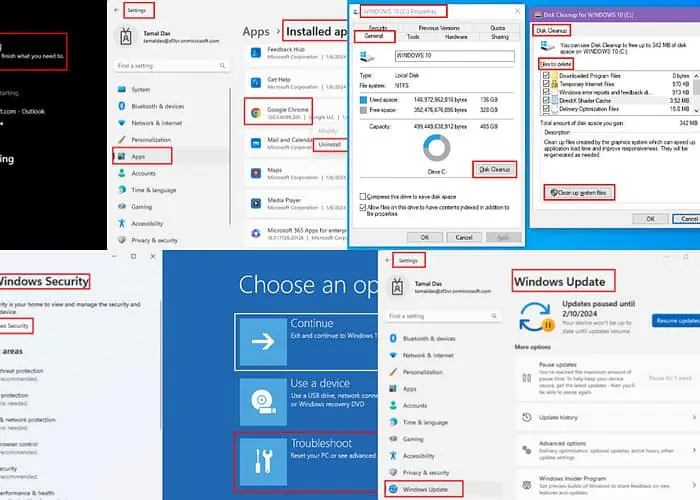
Is your Windows computer taking forever to restart when you need to reboot the PC after a software installation or Windows system configuration modification?
Read this step-by-step guide until the end to find the proven methods to speed things up. I’ve tested each of these methods on my laptop, and one of them is certain to help speed things up.
Solution 01: Manually End Open Tasks
Often, you push the power button on your Windows computer to quickly restart the device. However, you end up with the following screen:
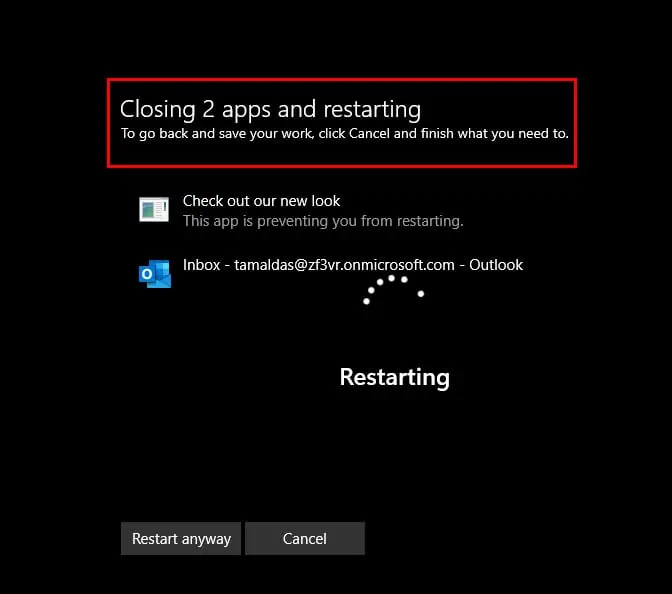
The device will keep showing the Restarting spinner or loading dots animation. You can keep waiting the restart will take forever. Instead, do the following:
- Click the Cancel button to go back to the Windows desktop.
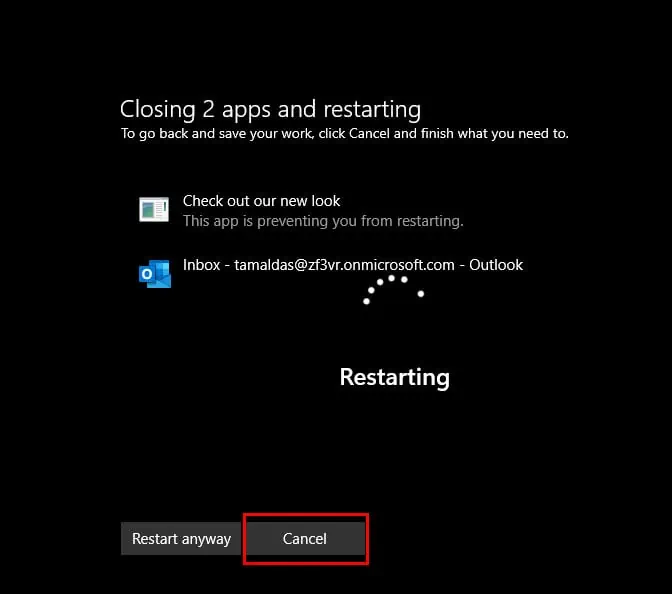
- Save your work and documents on the open apps.
- Close the apps, and then attempt a restart again.
- Alternatively, if you don’t need to save the work, click on the Restart anyway button.
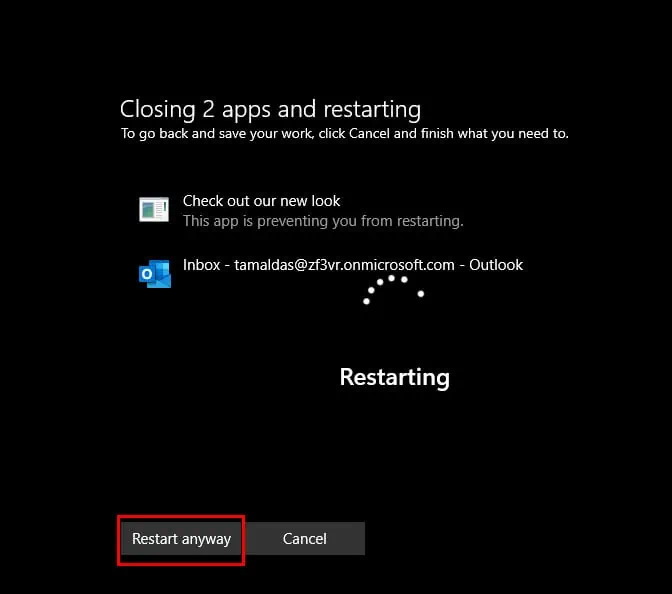
- Your PC should reboot immediately.
Solution 02: Force Restart the Computer
Press and hold the power button on your computer until the device shuts down.
Now, press the power button once to boot the device.
Try to restart the device again from Start > Power button > Restart. The issue should be fixed.
Solution 03: Check for Malware or Viruses
Unsolicited apps, viruses, and malware can keep running on the system after you push the power button or click Restart in the power menu.
If the device doesn’t successfully begin the restarting process after a few minutes, do this:
- Press the Windows + I keys to launch the Windows Settings dialog.
- Click on the Privacy & security option on the left side panel.
- On the right, click on the Windows Security app.
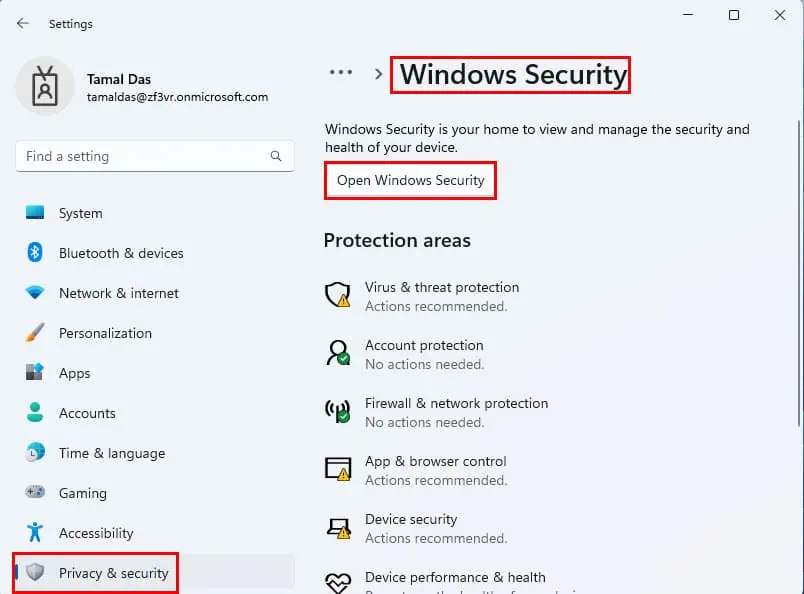
- Select the Virus & threat protection below the Protection areas section.
- On the Virus & threat protection dialog, click the Scan options link.
- Select Full scan on the next dialog box and hit the Scan now button to start the virus scan.
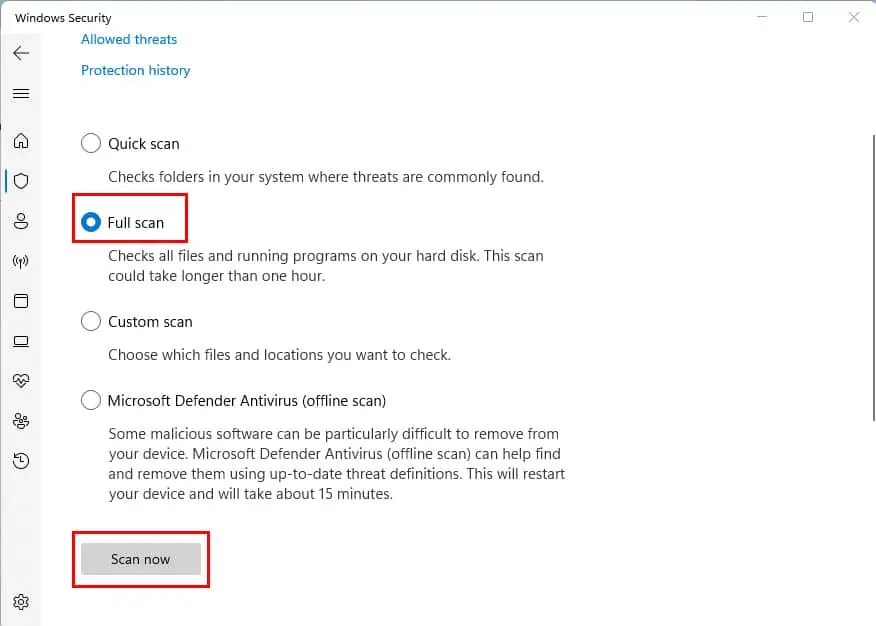
If PC restart is still taking too long, try scanning the system with a third-party antivirus app. For this task, ESET Internet Security is an excellent choice, this software is not only an antivirus, but a complete security solution that allows you to perform in-depth scans of your system and also protects you in real-time when navigating the web or using various software.
If want to try a different security software you can find below a few lists with different tools that will help you protect your computer.
Solution 04: Complete System Updates
If any system updates are getting downloaded or being installed, you must wait before the system can be restarted. So, check if a Windows update is still in process by going to Windows Settings (Win + I) > Windows Update.
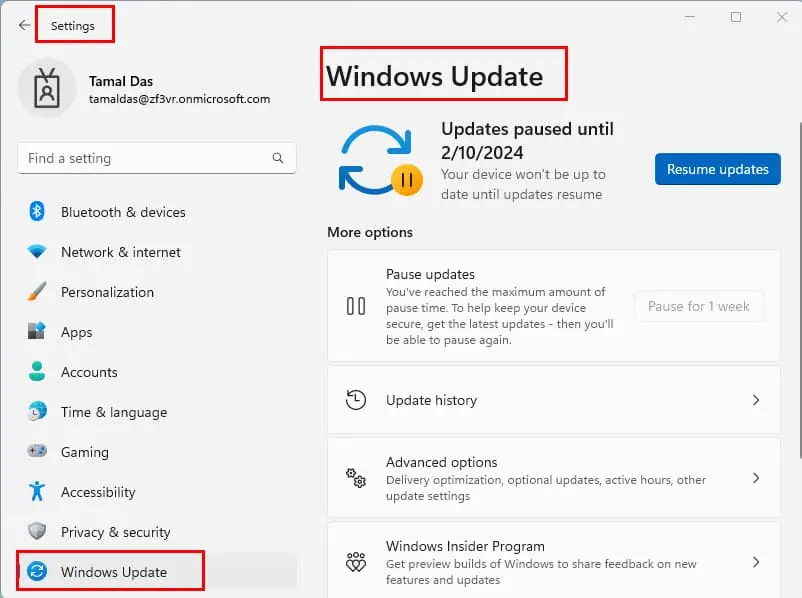
On the right side, check if any Windows update is in progress. If yes, wait until it’s over.
Uninstall OS Updates
Is your computer or laptop taking forever to restart just after installing a Windows update? Do the following to get rid of the buggy updates:
- Click on the cogwheel icon on the Start menu to launch Windows Settings.
- Inside the Find a setting box, type Uninstall Updates and hit Enter.
- Click Uninstall updates in the Search results menu.
- You should now see a list of Windows updates installed with installation dates.
- Click Uninstall to remove the updates installed recently before the delayed system restart issue.
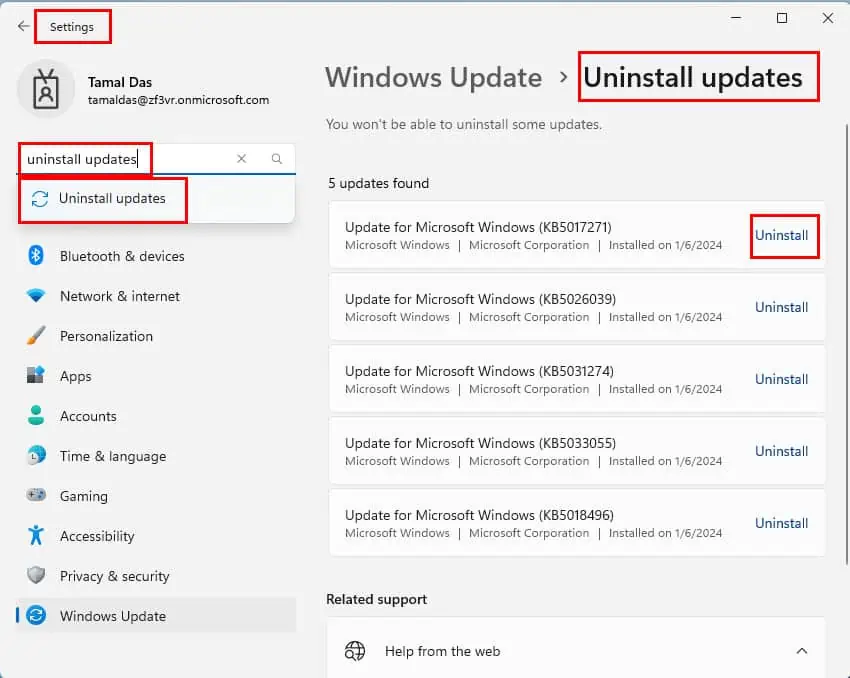
Solution 05: Disable and Re-Enable Fast Startup
- Access the Power Options menu from the Control Panel as shown earlier.
- Click on the link that says, “Choose what the power buttons do.”
- Now, click the button that says, “Change settings that are currently unavailable.”
- Uncheck the Turn on fast startup checkbox.
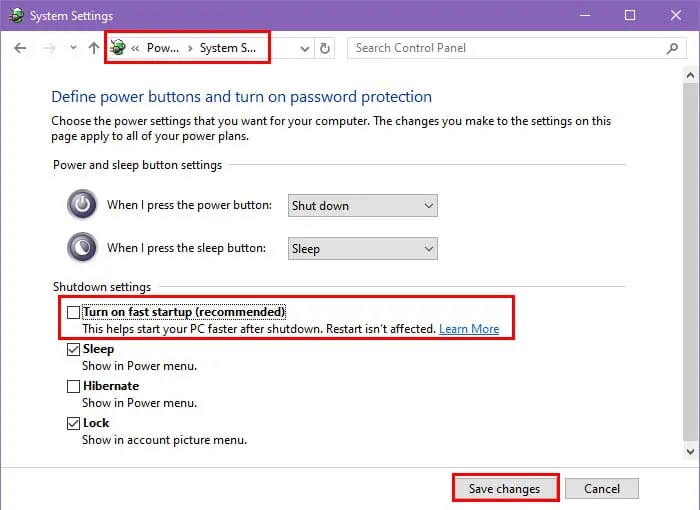
- Click the Save changes button to close Power Options.
- Now, repeat the above steps to re-enable Turn on fast startup.
Solution 06: Reset Power Settings To Default
- Go to the Start menu and type Control.
- Click on the Control Panel icon.
- On the Control Panel, click on the Power Options menu.

- For the existing power plan, click on the Change plan settings link.
- Now, click on the Restore default settings for this plan button.
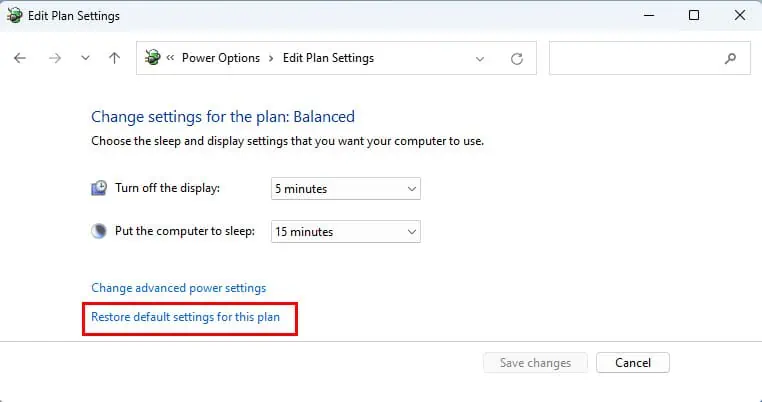
Solution 07: Uninstall Recently Installed Apps
A recently installed third-party app might be corrupted or interfering with system files when you restart the PC.
Uninstall the app from the Settings (Windows + I keys) > Apps > Installed apps.
Scroll down the Installed apps list to find the app you want to delete, click the ellipses or three dots menu, and choose Uninstall.
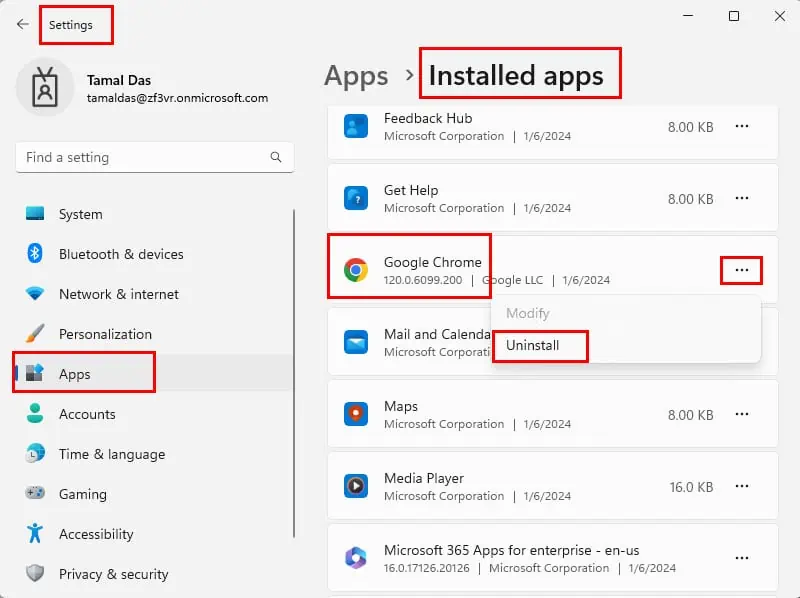
Solution 08: Run Check Disk and Disk Cleanup
Check Disk Using chkdsk Tool
- Open Windows Command Prompt (Terminal app) with elevated rights or administrative access.
- Run the following command into the console: chkdsk C: /f.
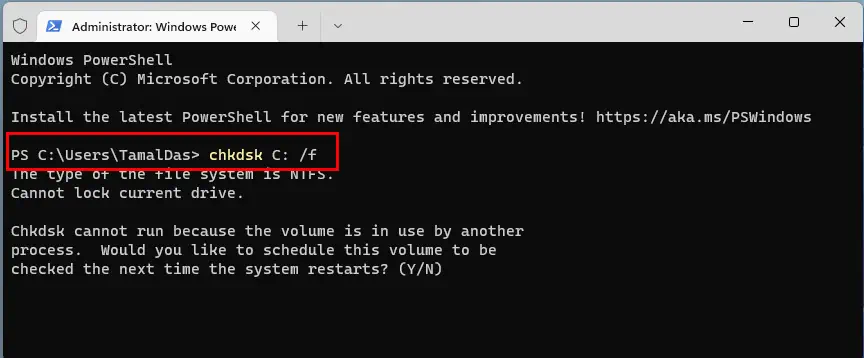
- Press Y to schedule the disk-checking process.
- Reboot the PC and wait for the disk checking and disk fixing to complete.
Disk Cleanup
- Go to the This PC window and right-click on the Windows installation drive, preferably the C drive.
- Click on the Properties option.
- Inside the General tab, you should see the Disk Cleanup button. Click on it.
- The Disk Cleanup dialog will pop up.
- Inside the Files to delete menu, choose the items you want to delete.
- Now, click on the Cleanup system files button.
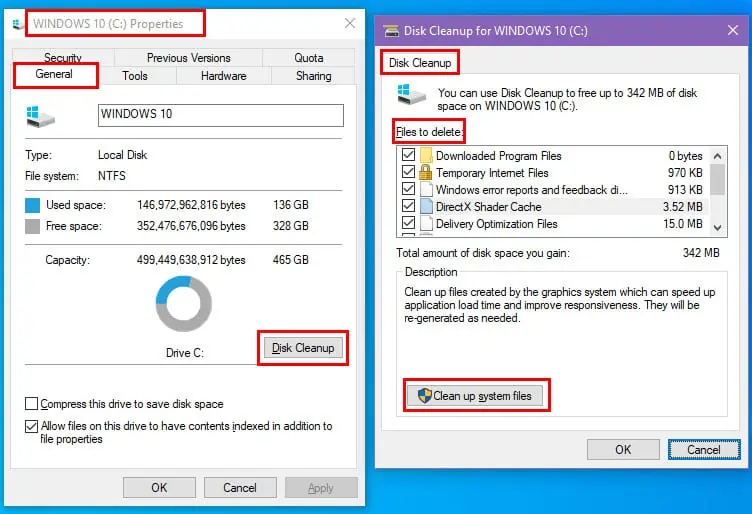
Read more: Best PC Cleaners for a Healthy System
Solution 09: Perform a Clean Boot
- Open the Run dialog by pressing the Windows + R keys together.
- Type msconfig and hit Enter to launch the System Configuration utility.
- Go to the Services tab within the System Configuration window.
- Make sure the box labeled Hide all Microsoft services is checked to not to disable essential Windows services.
- Now, click the Disable all button to deactivate all non-Microsoft services.
- Click Apply to confirm the changes and then hit the OK button.
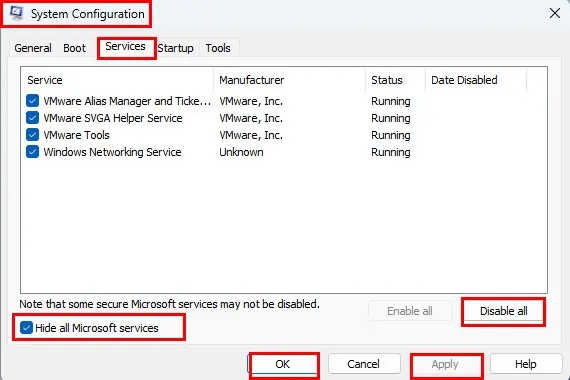
- You shall receive a prompt to restart your computer.
- Click Restart. This reboot might be slower.
After performing a Clean Boot, the PC will come to the home screen. Now, restart again and see if the PC restarts faster or not.
If the PC restarts faster, some third-party apps and services are slowing down your PC. Remove unnecessary apps and services to permanently fix the PC restart issue.
Solution 10: Disable Unnecessary Startup Programs
- Launch the Task Manager tool by right-clicking on the taskbar and choosing Task Manager from the context menu.
- Navigate to the Startup tab within the Task Manager. Here, you’ll find a list of programs set to launch automatically when your Windows PC boots up.
- Scrutinize the list of startup programs to identify those you wish to deactivate.
- The Startup impact column provides insights into each program’s effect on the Windows PC startup process.
- To disable a startup app, either right-click on it and choose Disable from the context menu or select the program and click the Disable button located at the top-right of the Task Manager window.
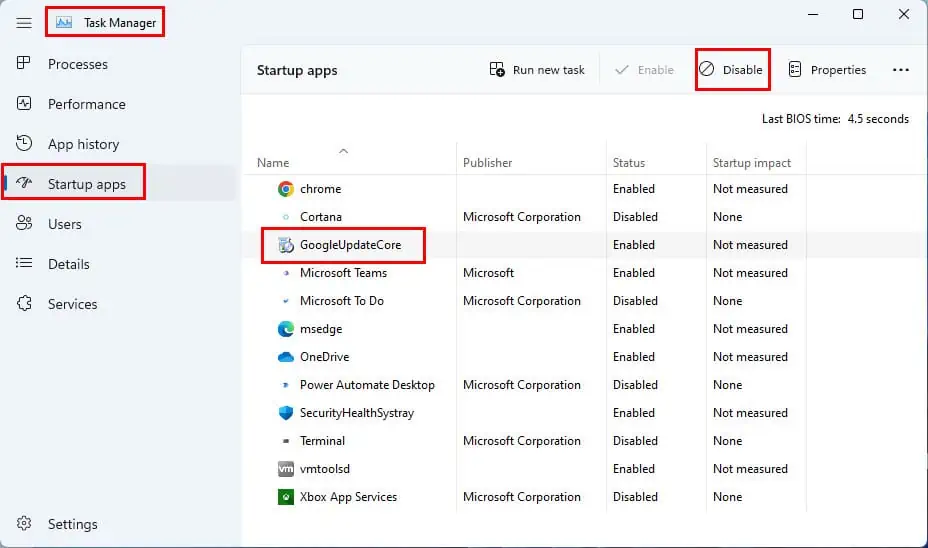
- Repeat this process of disabling startup apps for each unnecessary startup program you want to deactivate.
- Close the Task Manager.
Solution 11: Check for Hardware Issues
Physical shock and dust can interfere with the PC components installed on the motherboard.
You need to open up the PC case and check if all hardware components are fitted snugly onto their ports. Then, power up the PC to notice if the startup time reduces or not.
For laptops, you need to take the device to an authorized service center since DIY laptop or notebook PC repairs aren’t suitable for you if you aren’t a computer technician.
Disconnect Extra Devices
Are there multiple external accessories connected to the PC? For example, a NAS storage device, game controller, external drive, scanner, printer, security camera, and so on.
Remove all the external devices connected via USB or other external ports except for the keyboard, mouse, and display unit.
Now, try to reboot your PC again.
Solution 12: Restart in Safe Mode
- Push the power button on your Windows PC case or notebook until the device powers off.
- Release the power button and then press it once to turn on the PC.
- When you see the manufacturer’s logo on the screen, press and hold the power button again to shut down the device.
- Repeat the above steps twice to access the Windows Recovery Environment (WinRE).
- After a few loading screens, the Automatic Repair screen will appear. Click Advanced options.
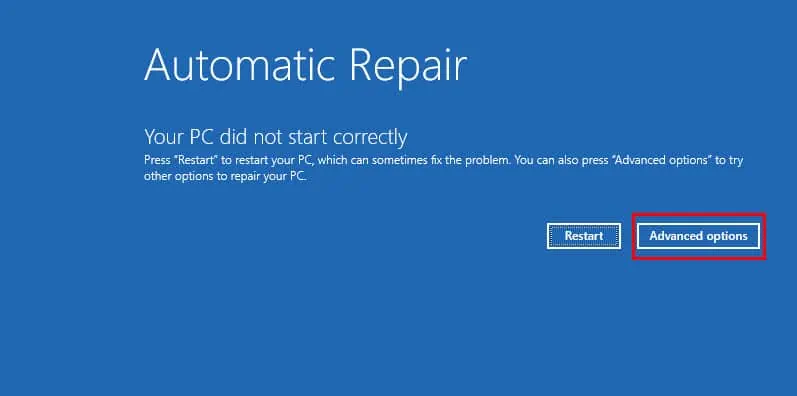
- Now, in the Choose an option window, choose Troubleshoot.

- Within the Troubleshoot dialog, click on the Advanced options.

- Now, click the Startup Settings option and then choose Restart.
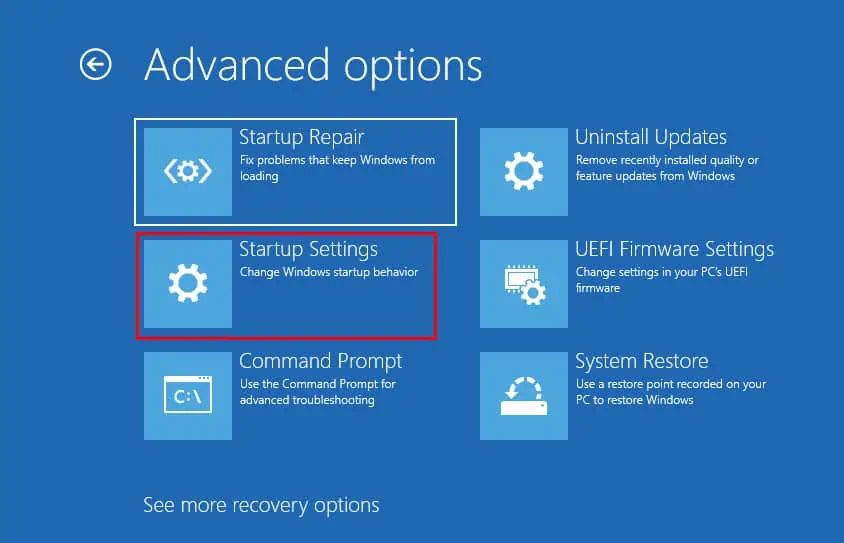
- Upon hitting the restart option, a list of options with corresponding numbers will appear.
- Press the number 4 or the one linked with the Safe Mode option.
- Your PC will now boot into Safe Mode.
If rebooting to Safe Mode is faster than rebooting in normal mode, the slow restarting is due to third-party apps you installed. Get rid of those apps to enhance device startup time.
Solution 13: Perform a System Restore
Do you know when the PC restarted just fine? If yes, follow these steps to restore the PC to that last known good configuration:
- Type Recovery on the Start menu and click on the same app.
- Now click on Open System Restore.
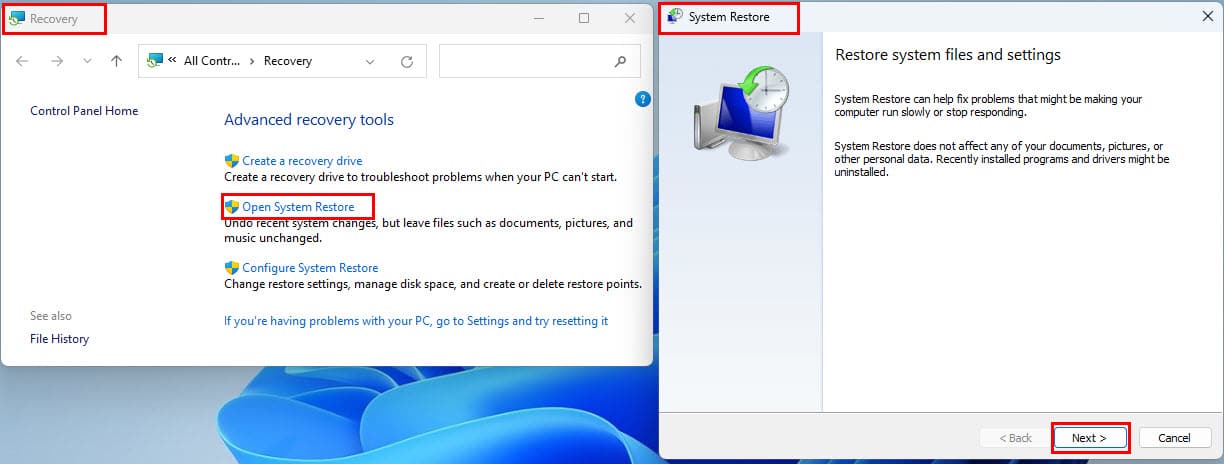
- Click Next on the System Restore dialog.
- Choose a restore point and again click Next.
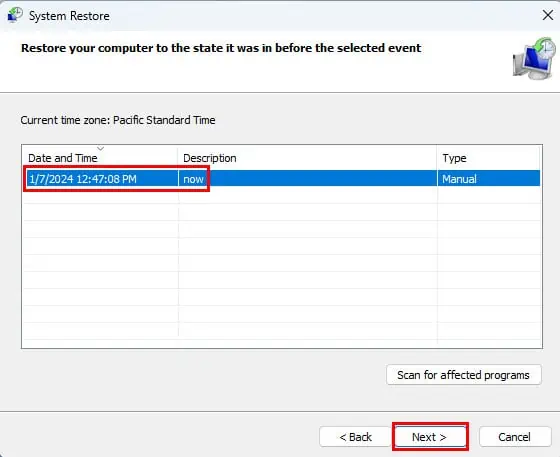
- On the Confirm your restore point dialog, click Finish.

- Now, follow the onscreen instructions to complete the final steps.
Suggested reading:
These are all possible and easy fixes you should try when your Windows PC doesn’t reboot, it’s stuck on the restart screen, or it reboots more slowly than it usually does.
Do you know a better method than the ones outlined above when your computer is taking forever to restart? Share your thoughts by writing a comment below.









User forum
0 messages